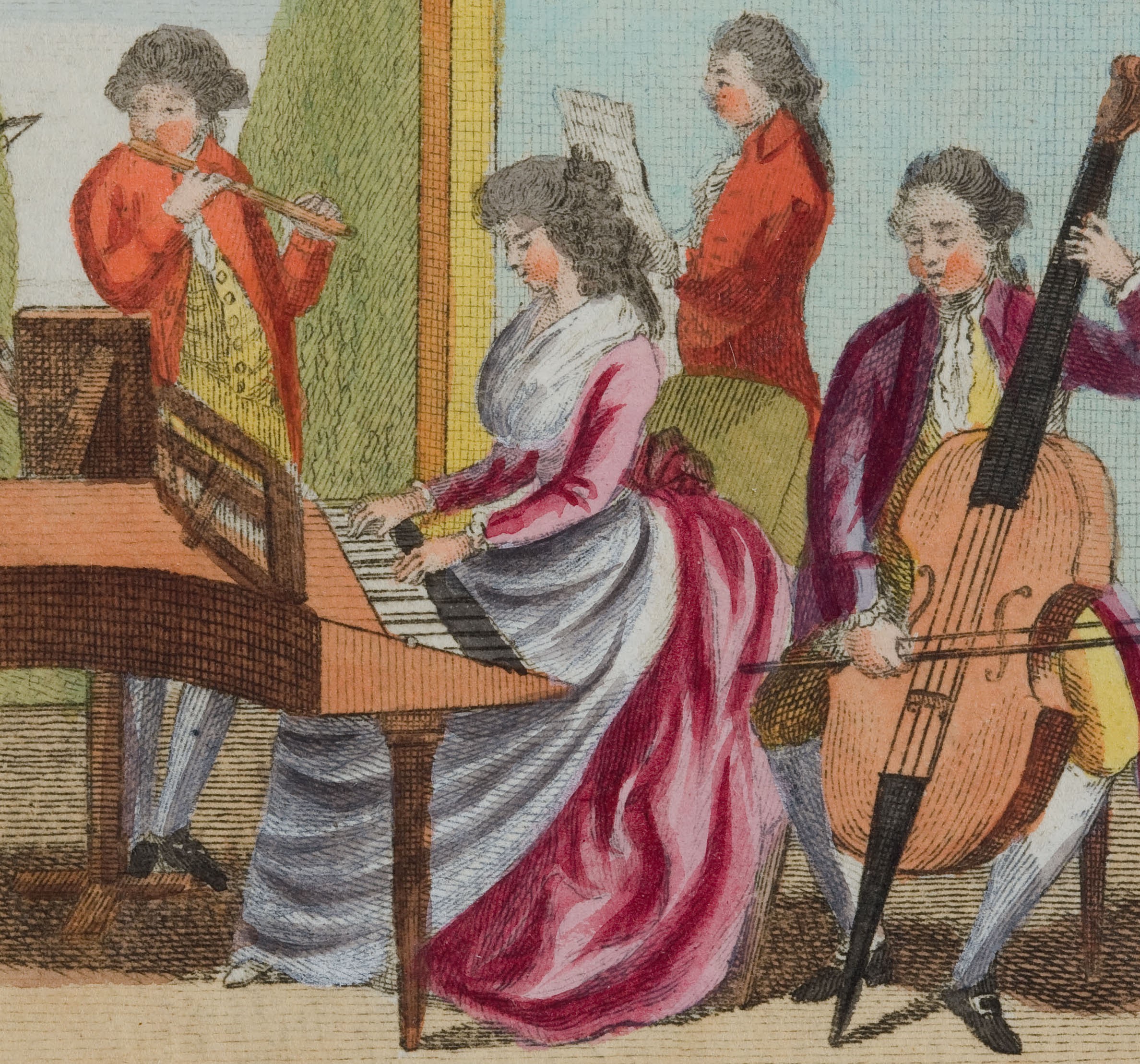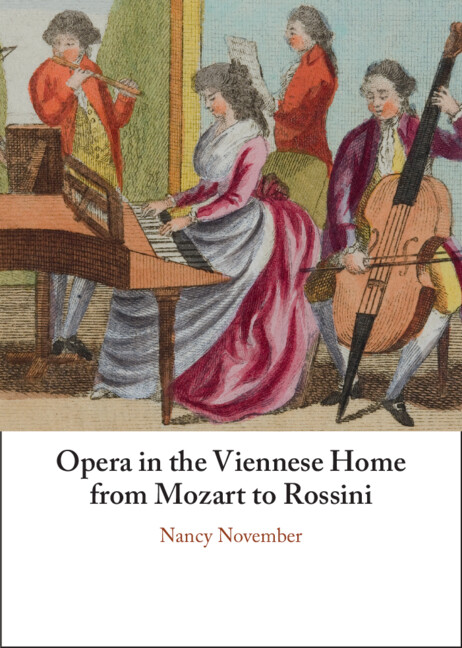
It’s always difficult to step outside one’s comfort zone. In the case of this book, the process of getting ready to step outside took a decade. This may seem unreasonably long, since the step did not even involve much of a shift—really from a study of chamber music in Vienna around 1800 to a study of arrangements of opera for chamber music in Vienna around 1800. Not very scary, right?
In fact the subject was difficult to approach not because of any need for courage, but rather a need for evidence. It arose in answer to a seemingly simple question: what were people listening to in Vienna around 1800? The answer, of course, includes the ticking of clocks, clopping of horse hooves, and, around 1805–6 the invading Napoleonic troops. In this partial response to the question, though, I restricted myself to what emerges as the most popular musical genre in Vienna around 1800: opera.
At this time, Vienna was in the grip of a rage for opera, especially Italian opera. This opera fever manifested itself in numerous spin-offs, including, notably, take-home versions to extend the entertainment, education and fun outside the theatre walls. This book explores opera in the home primarily through these manifold arrangements, whose plentiful number and variety are evidenced in publication catalogues, surviving editions, and manuscript copies; as well as reviews and accounts of performance.
The study is fascinating from a historical angle—it involves pulling back the curtain on a world ‘behind the scenes’—a domestic world little accessed by cultural, art or music historians until recently. But this world, which we had thought little worthy of attention, reveals numerous insights into taste, canon formation, sociability, agency and even politics. The study of opera in the Viennese home also provides many specifically musical insights, into performance practices and standards, musical understandings and ways of listening, and musical priorities.
To take just one example, Mozart’s opera Die Zauberflöte was especially popular in arrangements for home use, long after its premier in 1791. In general, German language theatre had been slow to become popular, possibly owing to some upper-class resistance to Joseph II’s politics, which pushed German-language theatre strongly but brought, among other things, restrictions in theatrical performance more generally. After Leopold II’s ascent to the throne in 1790, German-language theatre, which was then perhaps no longer associated with Joseph’s social policies, enjoyed a vogue in the salons. Singspiele were therefore an obvious choice for salon entertainment in the 1790s, in various guises with or without text. So the numerous arrangements of Singspiele in Traeg, notably of Mozart’s Die Zauberflöte, might well relate to this socio-political phenomenon. Die Zauberflöte is the most prevalent work of all in Johann Traeg’s 1799 Viennese publishing catalogue, in terms of numbers of arrangements (37 arrangements in total).
Each original edition, because of its deficiencies (by modern editorial standards), provides some scope for performers to exercise compositional skills. For example, in the 1806 Artaria string quartet arrangement of Figaro, the viola player must delete an entire bar near the end of No. 4 to add up the parts. There are also several bowing and articulation discrepancies between the parts, including missing triplet signs in the cello in No. 5, all of which can be resolved through careful listening by the performers. But quartet players at this time, even the professional performers who were starting to be heard in public, were not necessarily given to much rehearsal. An article from 1810, ‘Performance of Instrumental Quartets’ (1804) for the Allgemeine musikalische Zeitung, signed ‘Cambini in Paris’ but probably written by Friedrich Rochlitz, the journal’s editor at the time, suggests as much. The theatrical metaphor he deploys here suggests a tricky mediating role for performers in the instrumental quartet in the emerging public performance contexts. He argued that music will be meaningless to an audience unless the performers have rehearsed sufficiently:
The best actor would not dare to give a scene from a significant play without having gone through it: it causes me grief, and I must shrug my shoulders involuntarily when I hear musicians say: Come on, let’s play quartets! – just as lightly as one says in society: Come on, let’s play a game of Reversis! Then, must music indeed remain vague and without meaning (Giuseppe Cambini [Friedrich Rochlitz], ‘Ausführung der Instrumentalquartetten’, Allgemeine musikalische Zeitung 6/47 [1804], col. 783).
In a properly realised string quartet performance, the performers need rehearsal to produce ‘perfect performance’ (vollkommene Ausführung), as he terms it. But in this article the author protests that quartet players are not achieving this standard; his complaint suggests that extensive rehearsal was not considered normal or necessary, even for professionals (see also Edward Klorman, ‘The First Professional String Quartet? Reexamining an Account Attributed to Giuseppe Maria Cambini’, MLA Notes 71/4 [2015], pp. 629–43).
This lack of rehearsal (by modern standards) seems to have remained true into the 1820s: in a conversation book of 1825, professional violinist Karl Holz observed to Beethoven, ‘We rehearse only your quartets, not those of Haydn and Mozart, [which] work better without rehearsal’ (Dagmar Beck, Grita Herre and Karl-Heinz Köhler (eds.), Ludwig van Beethovens Konversationshefte, 11 vols. [Leipzig: Deutscher Verlag für Musik, 1968–2001], vol. 8 [1981], p. 259].
As to amateur performers of opera arrangements, they were left to work out a good deal in performance—and were probably striving more for a fun sight-read than ‘perfect performance’.

Latest Comments
Have your say!